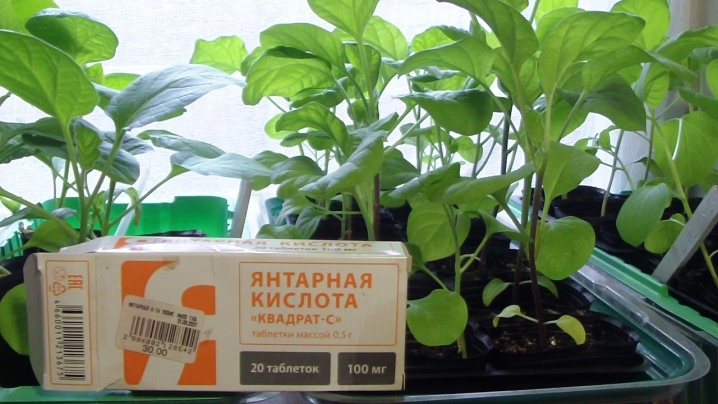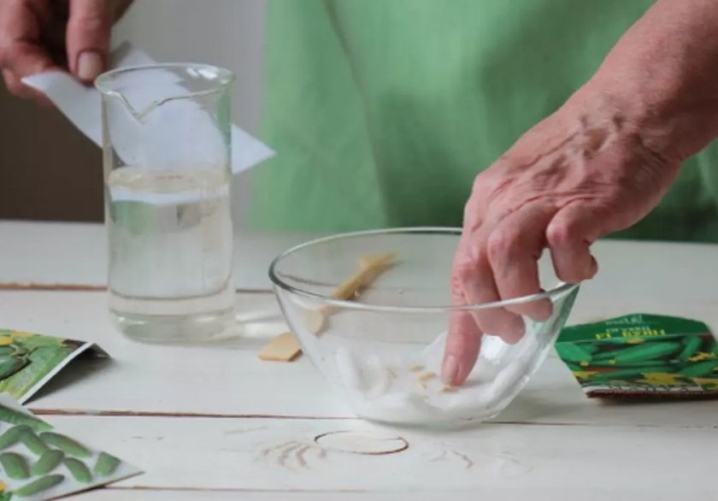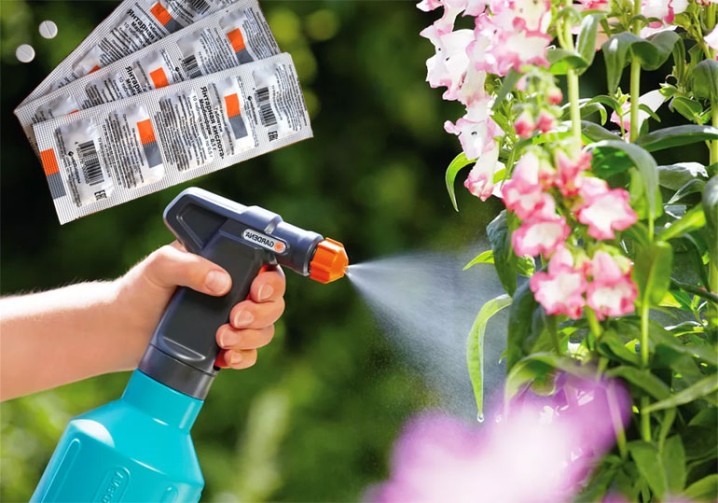Succinic acid for indoor plants: dosage and indications for use

Houseplants are found in almost every home. Experienced flower growers often use succinic acid in caring for them. From the material in this article, you will learn what it is and how to use this tool correctly.
What it is?
Succinic acid is a popular fertilizer used by experienced gardeners and florists.... It is a crystalline type substance without a specific odor. A plant growth stimulating agent is nothing more than an organic soluble preparation with a wide range of applications, the taste is close to citric acid.
The substance is soluble in water as well as alcohol. In addition to amber, it is found naturally in animal organisms. This acid non-toxic, it is non-toxic. Scientifically, it is called ethane 1,2-dicarboxylic acid. You can use it without protective equipment.


In its pure form, it is a powder; a substance sold in pharmacies has impurities. The 500 mg tablet contains only 100 mg of the acid itself. The remaining 400 mg are glucose, starch, talc, calcium stearate. It is the additional components that prevent the tablet from completely dissolving in water.
The pure product is sold in specialized stores. The volume of the package is 4 g, which is equivalent to 4 packs of 10 tablets each. packaged. Crystals have a whitish tint, their solubility increases when the liquid is heated.
Indications for use
Succinic acid is used for indoor plants not only as a growth stimulant. Its use has a beneficial effect on the structure of the soil; under the influence of an agrochemical, its composition changes. The soil is put loose and soft, the microflora is restored. After application, the earth is saturated with useful substances, toxins are removed from it.
Besides, an agrochemical has a beneficial effect on the condition of plants. They can better absorb nutrients. Thanks to this, they more actively enter the phase of flowering and seed formation.
When using succinic acid, the resistance of plants to various stress factors (frost, return frost, drought, soil salinization) increases.

When using an agrochemical, root formation is improved, the agent is also used as a fertilizer. Succinic acid is an immunomodulator and food for home flowers. It can be used as a mineral nutrition regulator. It accelerates the maturation of seeds, allows plants to recover faster after transplanting.
This top dressing stimulates chlorophyll production and photosynthesis. She can feed seeds before disembarkation.
Succinic acid promotes the accumulation of physiologically active substances and vitamins. Thanks to her, plants become resistant to diseases.
This tool promotes the resuscitation of plants. When used, the production of chlorophyll is increased, which contributes to the filling of flowers with vital energy. The color of plants improves, the absorption of bio-additives from the soil is accelerated. However, it is necessary to use the drug correctly, since if the dosage is exceeded, crops can be harmed.
How to breed?
The correct dilution of the drug depends on its form. The purpose of use also affects the concentration of the solution.Succinic acid is best suited for processing plants in the form of a ready-made solution or powder. It is necessary to dilute the agrochemical right before processing. Otherwise, it will lose its beneficial properties.

The maximum allowable shelf life of diluted succinic acid is 3 days.
Ready concentrated solution
If a ready-made concentrated solution is taken for processing, it is diluted at the rate of 200 ml of the base preparation per 800 ml of water. However, the concentration can vary depending on the type of use of the beneficial drug. For example, a more concentrated solution is used for irrigation.
On average, 200 ml of the stock solution and 800 ml of ordinary tap water should be mixed for 1 liter of the finished liquid.
The dosage for seed treatment when soaking is different. The solution for soaking seeds or cuttings is made weakly concentrated. In this case, the seeds are soaked for 24 hours in a solution prepared from 40 ml of the finished product and 1000 ml of water. The exposure time is different. For example, to process the root system or strengthen it, it is necessary to soak the roots of indoor plants for no more than 1-2 hours. In other cases, more time is required.

Pills
To prepare the solution, you must first crush the tablets. If you need a solution with a concentration of 0.1%, you need to take 10 tablets per 1 liter of water. The substance is diluted according to the following scheme:
- take a clean liter container;
- pour a little warm water into it;
- crushed tablets are added to the water;
- mix everything and add cold water to the desired volume.
To use the solution, you must wait until a sediment appears at the bottom. After that, the liquid is poured into another container and spraying is started.

Dry powder
Preparation of a solution from a powder does not differ from the scheme using crushed tablets. Moreover, it is necessary to use warm and settled water... Someone dissolves succinic acid in a small amount of hot water, mixing the resulting concentrate with cold water to the required volume.
For processing, it is necessary to prepare the exact volume of liquid in order to consume it without residue. It is useless to pour excess liquid on the plants: if in one case it will have the opposite effect, then in the other it will not affect it in any way. Plants absorb as much nutrients as they need and no more.


Application methods
Methods of using succinic acid are different. It is watered with it, the plants are sprayed, their leaves are wiped using a cotton swab, cuttings and seeds are soaked. However, it cannot be used too often.
When processing seeds before sowing, choose fresh seeds, placing them in a shaded place.
To stimulate the rooting processes, you can use special plastic trays.
Individual plants are so sensitive to touch that they have to be treated with the smallest sprayer. To make the crops easier to transfer processing, this has to be done at night.
As for working with roots, before soaking for rooting, you have to wash and prune them. Plants can be treated with excessive moisture or overheating. However, in each case, it is necessary to take into account the peculiarities of the flower itself. All plants are individual: what is good for one of them is not always suitable for another.

Watering
Watering plants with a solution of succinic acid can be no more than 2 times a month. Other types of plants can be fertilized no more than once every 3-4 years, since frequent treatment can lead to the opposite effect. Cacti are processed only once.
It is necessary to use succinic acid correctly. It is necessary to water the plants with the diluted drug immediately after transfer to a new pot, and also as an emergency aid for chlorosis.However, it is important to take into account that pubescent plants (for example, gloxinia, violets) must be watered at the root. In winter, watering is not carried out, at this time it is allowed to process the plants by spraying or wiping the leaf plates.

Spraying
Spraying is done to accelerate the delivery of nutrients through the mouths of the lower parts of the plant. To do this, use a filtered solution of the drug. The procedure is resorted to in early spring in order to remove plants from the state of winter dormancy and stimulate vegetation. In addition, spraying is carried out for:
- awakening to the growth of lateral buds after circumcision;
- treatment of plants from pests;
- prevention of past diseases.
When spraying, it is necessary to ensure that the sun's rays do not fall on the plant.
It is advisable to carry out the procedure in the early morning or in the evening, while it is worth considering: you cannot spray the plants during the flowering period.
You can spray them with an agrochemical no more than 1 time in 14 days. In this case, the spray solution should be weakly concentrated. In this case, the dosage is 1 tablet in 2 liters of water.

Soaking seeds before planting
Seed treatment by soaking can be done in two ways. In the first option, the seeds are placed in a previously prepared container (for example, a glass), then poured with the prepared solution and kept in it for about 1-2 hours. After that, they are dried and planted immediately.
You can carry out processing in another way. In the second method, cotton pads are used, moistening them with a prepared solution and spreading seeds on them. After that, the moistened seeds are covered with plastic wrap and kept for germination. Once they hatch, they can be carefully removed from the discs with tweezers and planted in the soil.

Precautionary measures
Succinic acid is considered a potent and active stimulant. When working with varieties designed specifically for plants, care must be taken. Direct contact with a person's mucous membrane or into his stomach is fraught with negative consequences.
If the liquid accidentally gets on the skin during the treatment, it is necessary to rinse this area under running water.
Before doing this, you can treat the skin with a solution of regular baking soda. If the diluted drug gets into the eyes or on the mucous membranes, an urgent need to consult a doctor. The remnants of the drug must be poured out, it must not be left.
It is necessary to carry out manipulations with gloves. On contact with the product, the skin may become inflamed, sometimes the skin becomes covered with an allergic rash. During the treatment of plants with this drug, do not eat, drink or smoke. Store the substance out of the reach of children and pets.

Review overview
Despite the wide spectrum of action, not all growers know about the use of succinic acid for indoor plants. At the same time, those who use this drug note that it is really effective. Some reviews suggest that succinic acid only promotes rooting and has a beneficial effect on the growth and development of plants... It does not replace top dressing and all types of fertilizers, so they must be applied regardless of the frequency of use of the agrochemical.
Reviews of the drug confirm a different type of dosage for different purposes. For example, flower growers indicate that to improve immunity, it is necessary to spray at the rate of 2 g per 20 liters of water.

For information on how to use succinic acid for indoor plants, see the video.































The comment was sent successfully.